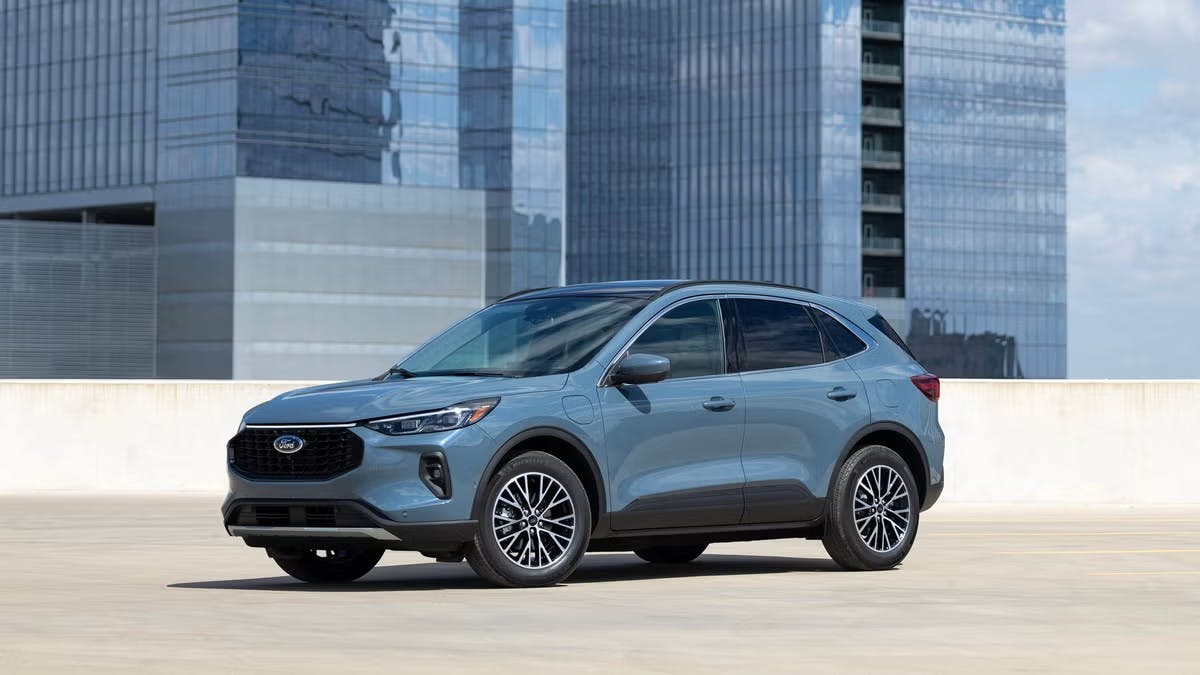
Range Anxiety, Be Gone: Ford’s EREVs Have You Covered
As the automotive industry rapidly shifts towards electrification, Ford has unveiled an exciting innovation designed to bridge the gap between traditional combustion engines and full battery-electric vehicles (BEVs): Extended-Range Electric Vehicles, or EREVs. This approach is a game-changer, particularly for consumers who rely on larger vehicles like trucks and SUVs for their everyday needs. Here's an in-depth look at Ford’s bold plan for EREVs and why this technology is poised to revolutionize the way we drive.
What Are EREVs?
Extended-Range Electric Vehicles (EREVs) are vehicles that combine the benefits of electric power with a small combustion engine used exclusively as a generator to recharge the battery on the go. This clever setup ensures that drivers can experience the efficiency and low emissions of electric driving while enjoying the peace of mind that comes with extended range and minimal charging needs.
Ford CEO Jim Farley has praised this technology, calling it a superior solution for larger passenger cars and trucks, particularly for drivers who require more range than a typical BEV can offer. The result is a vehicle that runs primarily on electricity—up to 95% of the time—while utilizing a small gasoline engine to extend the vehicle’s range for longer trips, without sacrificing performance or convenience.
Key Benefits of EREVs
- Extended Range with Efficiency
One of the standout features of EREVs is their impressive range. Ford’s upcoming EREVs promise an astonishing 700 miles of total driving range, with most of those miles powered purely by the battery. This makes them an ideal choice for drivers who regularly embark on long-distance trips or those who simply want the convenience of a vehicle that can handle both short commutes and cross-country drives. - Lower Battery Costs and Reduced Weight
Because EREVs rely on smaller batteries than traditional BEVs, they come with a significantly reduced price tag. In fact, Jim Farley highlighted that these vehicles cost “tens of thousands of dollars less” than their all-electric counterparts. This makes EREVs a more affordable option for consumers who want the benefits of electrification without the premium costs typically associated with larger EV batteries. - Appeal for Large Car and Truck Lovers
Farley emphasized that Americans have a deep-rooted love for large cars and trucks. EREVs allow these vehicle lovers to transition to cleaner, more sustainable driving while still enjoying the size and power they crave. Whether it’s a large SUV or a pickup truck, EREVs provide the ideal solution for those looking to embrace electric mobility without compromising on the vehicle size they desire. - Perfect for Commercial Use
Ford’s Pro business unit, which focuses on providing vehicles for commercial customers, sees an increasing demand for electric trucks and vans. For many of these customers, towing capacity is not a top priority. With Ford’s EREV technology, commercial fleets can enjoy the low operational costs and environmental benefits of electric driving, paired with the extended range provided by the combustion engine generator.
Ford’s Commitment to EV and EREV Technology
Although Ford is excited about the potential of EREVs, it is far from abandoning its pursuit of fully electric vehicles. The company continues to invest heavily in its electric future, with plans for the next-generation Lightning EV pickup and other battery-electric offerings to launch in the second half of 2027. Farley’s commitment to a diverse range of EVs, including small and midsize trucks and SUVs for private consumers, as well as larger electric vans and trucks for commercial customers, shows that Ford’s strategy is multi-faceted and forward-thinking.
This dual approach of embracing both BEVs and EREVs ensures that Ford will be able to offer sustainable solutions for a broad spectrum of drivers—whether they are individuals looking for a family SUV or businesses seeking an electric fleet solution.
The Economic Impact of EREVs
While Ford expects some short-term financial challenges, including a potential dip in profits in 2025, the company remains optimistic about its electric future. The introduction of EREVs will help Ford reduce production costs by using smaller batteries and leveraging existing combustion engine technology. Additionally, the increased efficiency of these vehicles will provide savings for consumers over the long term, creating a win-win situation for both Ford and its customers.
Farley is confident that, regardless of potential changes in government regulations or tariff negotiations, Ford’s investments in EREVs and EVs will continue to pay off. Ford’s focus on increasing production capacity, lowering costs, and ensuring quality will position the company for long-term success as the automotive world moves towards electrification.
The Road Ahead
Ford’s plan to integrate EREV technology into its lineup is an exciting step forward in the automotive industry. By combining the benefits of electric driving with the flexibility of a small combustion engine, Ford is offering a practical solution for customers who need the best of both worlds. EREVs provide the range, affordability, and performance that many drivers expect from larger vehicles while supporting Ford’s mission to become a leader in sustainable mobility.
As Ford continues to innovate and improve its electric and hybrid offerings, EREVs stand out as a perfect example of how the company is embracing the future of transportation. Whether it’s for personal use or commercial applications, Ford’s extended-range electric vehicles are set to become a significant part of the automotive landscape, making cleaner, more efficient driving a reality for millions of consumers around the world.
In the years to come, Ford’s commitment to EREV technology and its broader electric vehicle strategy will help shape a more sustainable future, where consumers can enjoy the benefits of electrification without sacrificing the size, range, or versatility they love in their vehicles. With Ford’s optimistic approach and continuous innovation, the future of electric driving looks brighter than ever.








